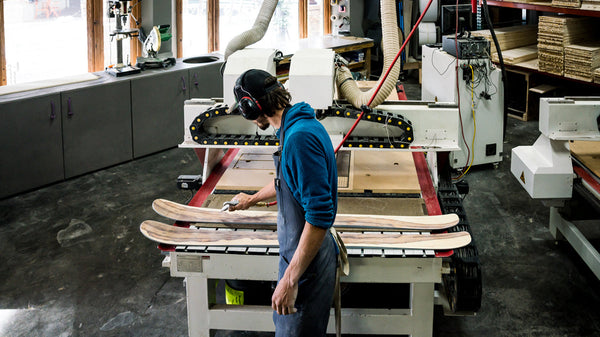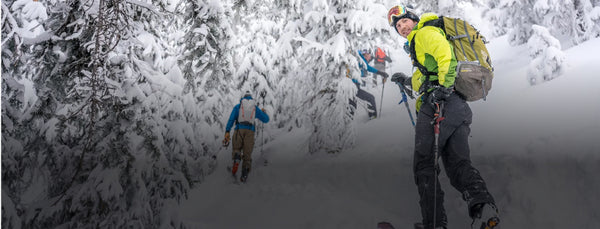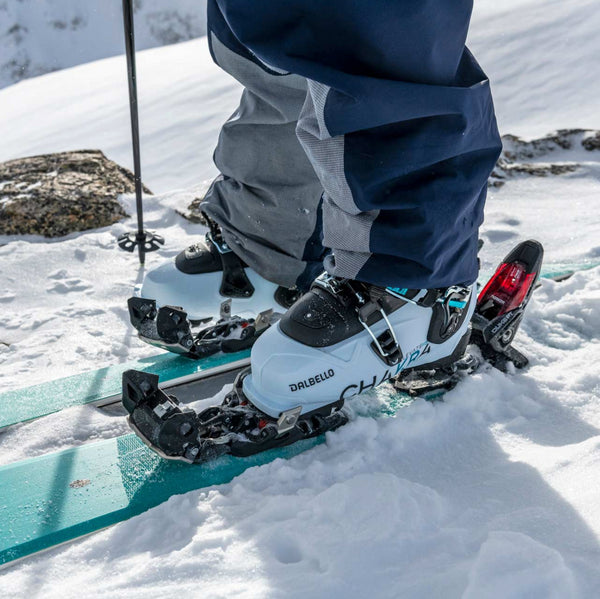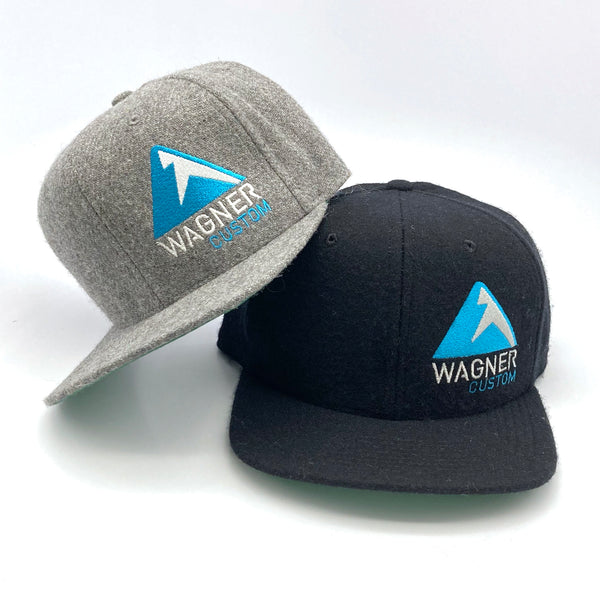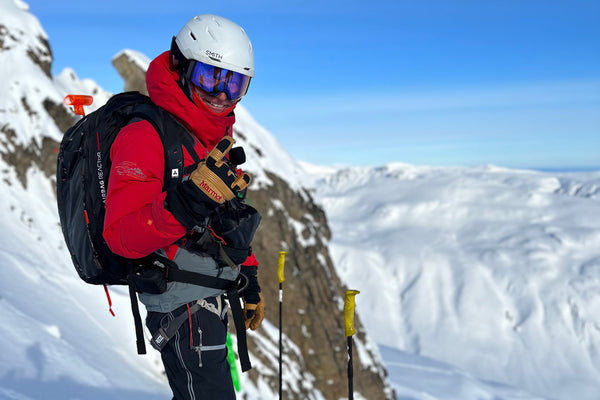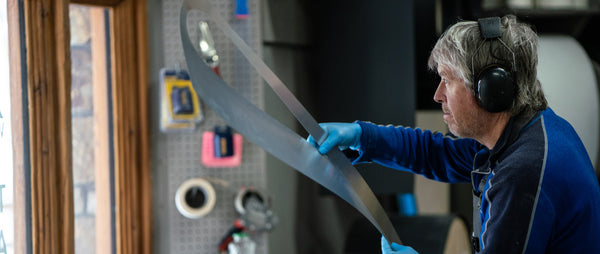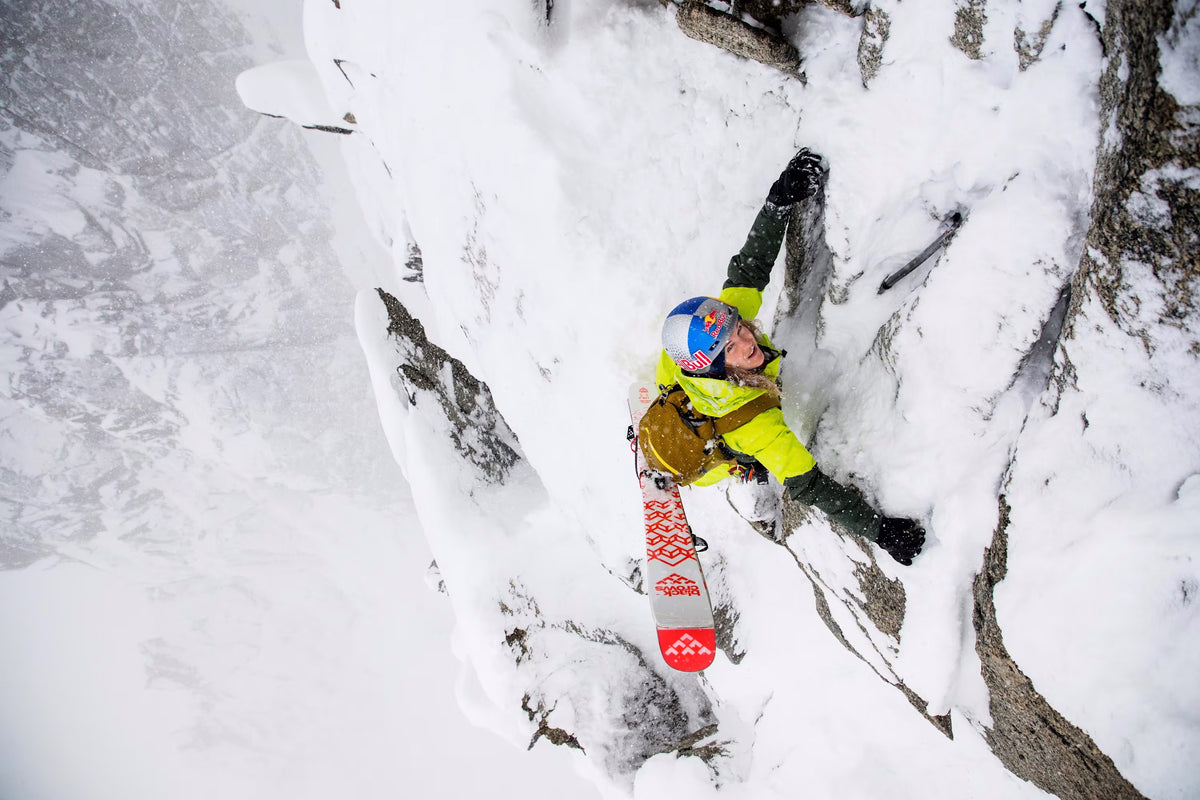
Level Up: Michelle Parker
Have you listened to our Next Level podcast, on which the inimitable Jason Blevins interviews some of the biggest names in skidom?
If you haven’t, you should probably call in sick, throw your skis in the car, and binge it on your way to the hill. For those of you who aren’t so into podcasts, here’s an excerpt from one of our favorites of the last few years—the incredible Michelle Parker.

Michelle Parker at home in Tahoe.
Parker got her start ski racing at her home resort, Squaw Valley (now Palisades Tahoe). By the time she was 15, she felt constrained by the discipline and realized that she was a freeskier at heart. She competed in park events at the U.S. Open and X Games for a few years, and then opened her repertoire fully into big mountain. She’s now spending most of her time exploring the backcountry, and she’s dedicated to raising awareness about avalanche safety and raising funds for philanthropic foundations she believes in.
Blevins caught up with her in January 2022. Here’s what she had to say.
Blevins: You throw a lot of turns but they’re still high speed turns. It’s like you’ve found a way to put carving in your skiing and not go slow.
Parker: My aim in the mountains is to ski really fast, but that must be the racer background in me. That technique and desire to arc a nice turn. I love that feeling. The feeling you get from putting energy into the ski and getting that back is really exciting. I am psyched on the turn.
Blevins: Well we are, too. How did you get started skiing? Did I hear that right that you got started skiing at 1?
Parker: Yeah, I was super privileged to be born in Lake Tahoe and have a family that was interested in going to the mountain. My mom and her friends had this thing where they’d try to get their kids on skis before they were 2. I don’t remember that, but I do know I’m more confident when I’m on skis than when I’m on my feet.
Blevins: When did you get into organized skiing?
Parker: When I was 4 years old, I did the Mighty Might program. The mountains raised me. I would take the school bus every day to the mountain for fourth period, which was PE class. I got super lucky in that sense. Day care was skiing. That really instilled deep roots for me in the ski community and in my hometown. That program led you into racing or moguls at that time, and I took mine to racing and was psyched on all disciplines. I took it pretty far, and then ultimately decided that it was an expensive path, and I wanted to have more freedom in my skiing than I would if I were skiing gates. I stuck with freeskiing.
Watch Michelle's edit from the "Magic Hour."
Blevins: What was that like? Trying to shake off the shackles of racing?
Parker: I was young—there was a little rebellion. You can’t go upside down in ski racing, and one of my favorite ski coaches had moved from the resort, and I was super bummed. He was the guy who wanted me to freeski. But when I started freeriding—I guess that’s what it’s called—that technical background helped me ski the mountain. When it didn’t’ snow, I was in the park. I was discovered in the park by the guy who started Line Skis. At the time I didn’t know it was possible to be a professional female skier. When he invited me to the US Open, I was blown away. There were so many women just like me. That inspired me a ton seeing it in real life.
Blevins: What were some of the skills that transferred over from racing?
Parker: Having this really balanced, aggressive stance puts you in the right position. When you’re going into variable snow, you’re in a position to react. Your knees are bent, and your shins are on the front of your boot. You should be able to feel that flexion happening. And your knees are parallel, not in an A-frame. If you’re in a parallel squat stance, you have so much more power. And your chest is upward and facing downhill, shoulders level, arms out front, and looking in direction you’re going to ski. That stance is also transferable to mountain biking and martial arts. That stance is key.

Keeping shoulders downhill, even in the air.
Blevins: How did you transition from park and pipe to big mountain?
Parker: It felt like a natural transition and direction of my ski career. The more you keep saying yes to these opportunities, the more you learn, and the more opportunities come up. That’s kept my passion really attuned. Back in the day, I grew up following Shane and Ingrid and JT Holmes and watching them film was the vibe I wanted. You’re skiing with your buds and you’re not competitive with anyone but yourself. You’re leveling up.
Learning how to read mountains became the crux of that move. That started with getting avalanche education and awareness. I went to Alaska and learned WFR, crevasse rescue, and avalanche 1. Avalanche awareness is really important to me. Once I had that under my belt, the doors opened and I could start skiing in the backcountry. It was cool but humbling. Especially going to Alaska. It was bigger terrain and the consequences were much bigger. Learning to ski and navigate that terrain took years. But every time I went to Alaska, I would just watch so many movies, and that’s how I learned how to ski those mountains. Visualizing helped so much.

Michelle takes a moment to chill without ski boots.
Blevins: When you’re standing on those lines, are you still thinking about those movies?
Parker: Once I’m up top and I’m in the elements, I’m not thinking about what other athletes have done. I’m channeling my most courageous self in that moment. I’m tapping into the warrior, which is who I call her. She’s super strong and really confident, and she has a force field around her and flaming balls of fire and no doubt in her mind. That’s who I tap into.
Blevins: If someone asks you how they can tap into their warrior, what do you tell them?
Parker: I learned this from a close friend of mine who’s a therapist and life coach. She was talking about how athletes can have multiple personalities, and if you can tap into that and be really descriptive, that’s been a helpful tool to focus and be the person you want to be showing up as in that moment.

Michelle skins uphill. (Photo: DarnTough)
Blevins: How do you create those personalities? I don’t have a warrior. I have a worrier.
Parker: It’s taken practice. I’ve had to ask myself the question, what makes me go? Oh yeah, it’s the drop-in count. Three two, one, go. At that point I’m so focused and I have to rely on my mind and body to be functioning as one. I can’t have any doubts, I have to have full confidence. If I don’t find myself in that confident space, I’ll probably back down or alter my line to make it more comfortable.
Your intuition is hard to put into words when you’re standing up there, but often I try to ask myself a simple question, and that helps me understand where I am with my ego. Am I doing this for myself—or the camera guys or the instagram or the people? If so, that’s a hard no. I need to be doing this for myself.
Blevins: Is there a piece of advice that still resonates for you?
Parker: It’s pretty simple, the best skier on the mountain is the one who’s having the most fun.
Listen to the full episode here.
--
Article by Kimberly Beekman
Kimberly Beekman is the former editor-in-chief of the late, great Skiing Magazine (RIP), and a longtime editor of SKI Magazine before that. She currently uses the title of “freelancer” as a beard to ski powder all over the world. She lives in Steamboat, Colorado, with her wonderful daughter and terrible cat.
Cover photo: Red Bull

